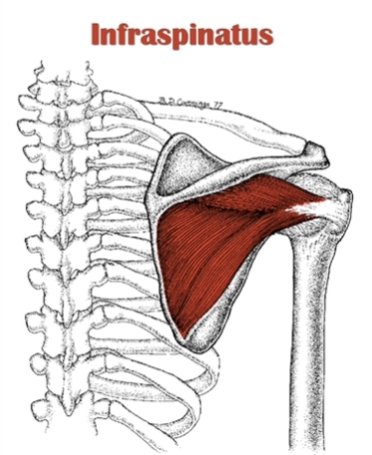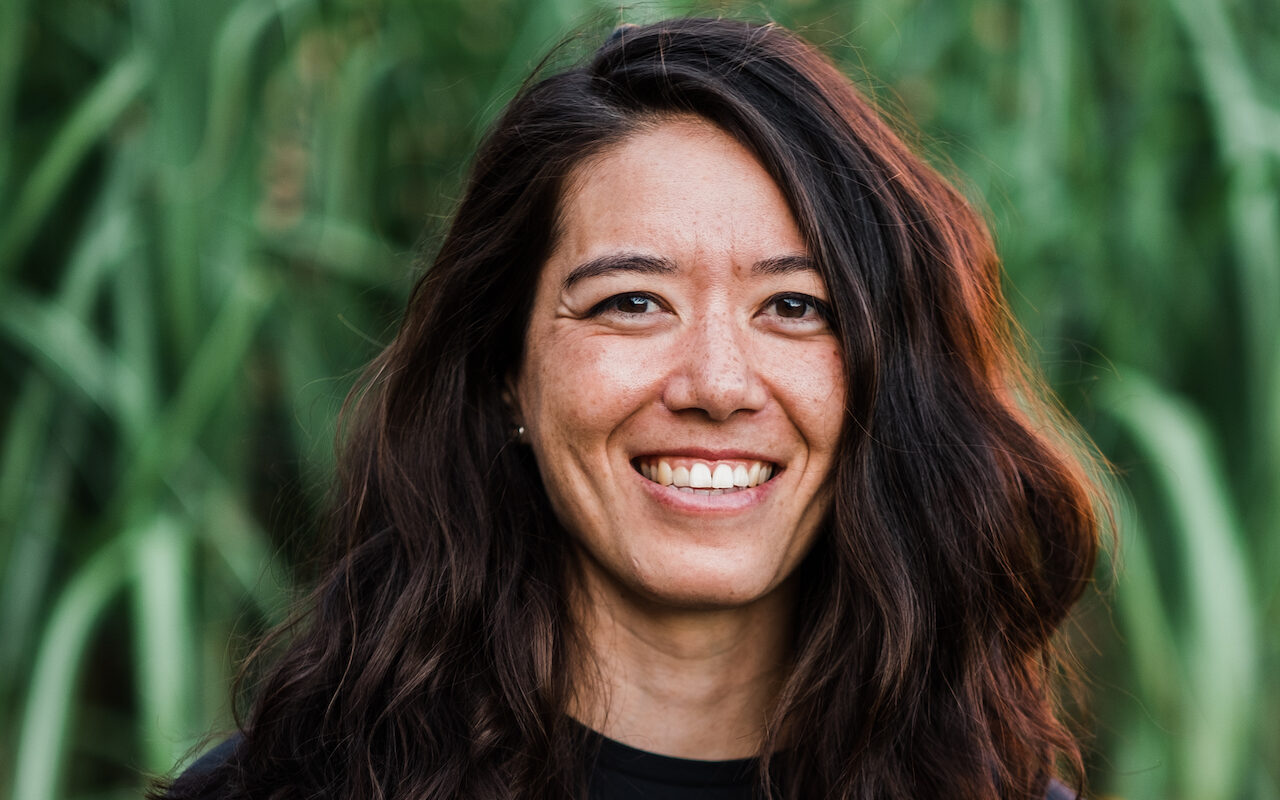By: SAYAKA TIESSEN, HONS. BKIN, MSCPT
In both kinesiology and physiotherapy school, we were taught anatomy. The sheer volume of knowledge was overwhelming. Where does each muscle attach? What nerve controls which muscle? It felt like we were learning everything there was to know about the body. That was incredibly naive of me, as research has plowed on and has shown just how complex our movement systems are.
This post will take a closer look at the infraspinatus, one of your four rotator cuff (RC) muscles. Located just under the boney ridge of your shoulder blade, it is commonly injured, especially in overhead athletes (throwers, climbers, etc).
When I learned about the infraspinatus, we were told that it was a muscle that externally rotates, or turns your arm outward (see below for a picture showing that position) and that it is controlled by your suprascapular nerve. But within the last 20 years or so, researchers have found that the infraspinatus has three distinct regions, each innervated by its own mini branch of the suprascapular nerve; the superior, middle, and inferior infraspinatus subregions.

Why does this matter? Well, turns out that the subdivisions serve slightly different purposes, kind of like how your municipality functions within the province. The province of Ontario has an overarching goals, but Waterloo Region will function in a different way than say the GTA. They also will take on more or less burden depending on the task at hand (regional containment of COVID19 being a prime and timely example). This goes for the subregions too – some sections might turn on more or less depending on the degree of arm elevation, your plane of movement, and resistance.
If that’s the case, then is there a way to make rehab more specific by targeting movements that bias one subregion over another?
I was hoping the answer would be yes, but the research isn’t there yet. It seems as though there are still some discrepancies in the research about which subregion does what. Furthermore, the role of the inferior infraspinatus has yet to be determined.

I have summed up 4 key takeaways below in terms of the roles of the subregions:
- All three subregions of infraspinatus are more active the higher your arm is in front of you (eg: they will work harder if you are reaching into a high cupboard, and will work less if reaching for something at waist height).
- The superior infraspinatus has a shared insertion on the top of the arm bone with your supraspinatus (another RC muscle that will have its own blog post next). It is thought that both muscles contribute to shoulder stabilization, and that redundancy allows for people to have tears and still be strong.
- The middle infraspinatus is more of a pure external rotator.
- There is minimal evidence for the role of the inferior infraspinatus.
What does this mean for rehab?
- When you are dealing with a fresh injury, start with exercises where your arm is low and closer to your body, like farmer’s carries. Any load on your arms will turn on your rotator cuff, and this is the least provoking position to be in.
- You can start with isometrics (exercises where you are not moving your arm through range) if you cannot even move the shoulder without pain.
- You don’t have to rotate your shoulder to get your infraspinatus. You can just do an arm raise and it will work all three subregions. The higher your arm, the more the infraspinatus will be working.
- Generally, strengthening external rotation follows the same principle. The movement of rotating your arm outward will be more challenging the further away your upper arm is from your body (overhead vs tucked into your side).
Check out the video below for 4 different exercises that target the infraspinatus, ranging from lower muscle activation to the most, using the principles I outlined above. Some of these exercises are based on articles published by researchers at the Digital Industrial Ergonomics and Shoulder Evaluation Laboratory at the University of Waterloo (local shout out!).
The next write up will target the supraspinatus – yet another notorious RC muscle that also has 2 subregions despite being super slender. As I eluded to above, superior infraspinatus shares an insertion with supraspinatus, and we will talk about why that is so important for shoulder stability and how you could approach rehabilitation for a torn supraspinatus. Stay tuned!
Sayaka is an evidence based physiotherapist in Waterloo. Click here
to learn more about her!

Comments are closed here.